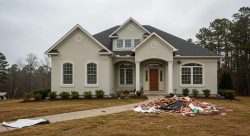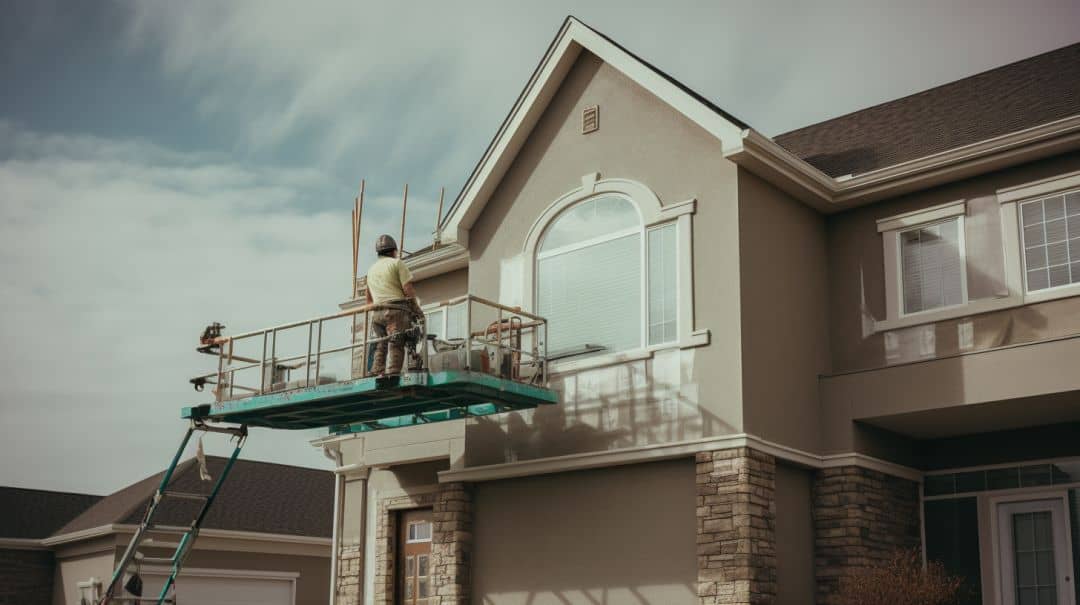Unlocking the Power of Advanced Technology to Ensure the Integrity of Your EIFS Cladding
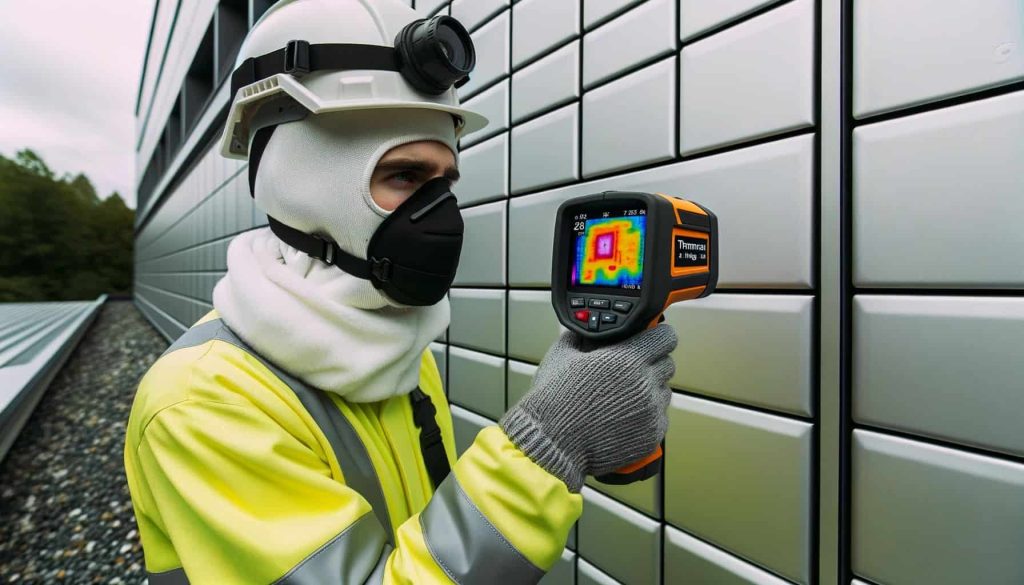
Introduction
Exterior insulation and finish systems (EIFS) have become increasingly popular in both residential and commercial construction over the past few decades. EIFS provides continuous insulation and decorative exterior finish that offers many benefits compared to traditional stucco or siding. However, potential issues can arise over time if EIFS is not properly maintained. Regular EIFS inspections utilizing advanced tools like thermal imaging cameras can help identify problems early before they become major repairs.
In this article, we will examine the importance of EIFS inspections, the benefits of incorporating thermal imaging, the proper training required, and what to look for when hiring an experienced EIFS inspection company. Utilizing thermal imaging as part of routine EIFS inspections can provide homeowners and property managers with peace of mind that any underlying moisture or insulation issues will be identified quickly and accurately.
Understanding EIFS Inspections
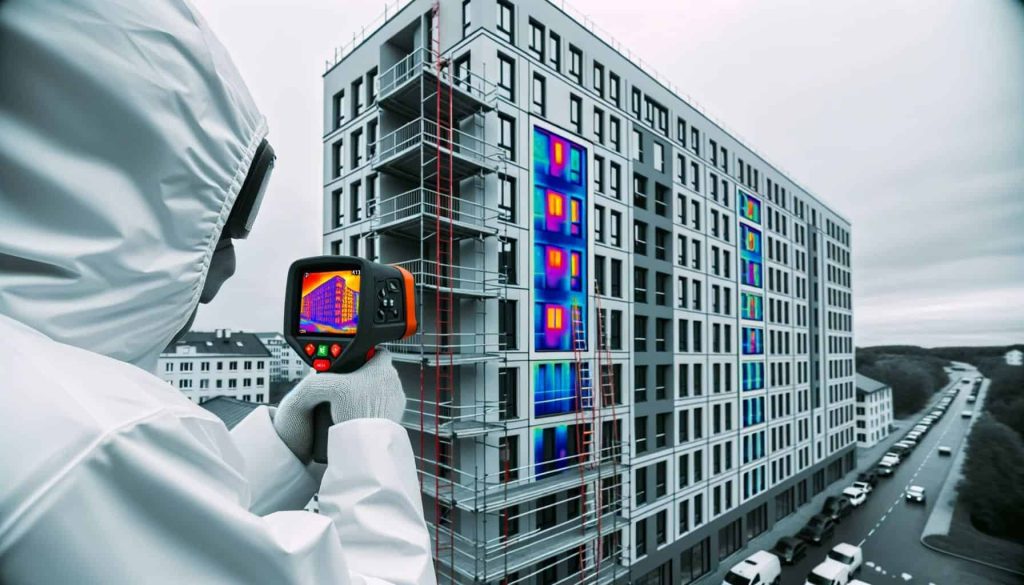
What is EIFS?
EIFS, or exterior insulation and finish systems, is an exterior wall cladding that consists of several layers – an insulation board, reinforced base coat, and a textured acrylic finish coat. EIFS provides continuous insulation on the exterior of homes and buildings while also offering an attractive, durable decorative finish.
EIFS has become a popular alternative to traditional stucco or siding since it can mimic a variety of looks while also improving energy efficiency. The insulation properties of EIFS can reduce heating and cooling costs compared to less insulated exteriors.
Why Do EIFS Inspections Matter?
While EIFS offers many benefits, it also requires proper maintenance and inspection to avoid potential issues. Since EIFS has very little capacity for moisture drainage, any leaks or cracks in the finish coat can allow water intrusion into the vulnerable insulation layer underneath. Trapped moisture in an EIFS wall assembly can lead to rot, mold growth, and structural damage over time.
Regular EIFS inspections by an experienced professional are essential to identify any flaws in the finish, insulation, or flashing details that could compromise the cladding system. Early detection of moisture intrusion or deficiencies through inspection can allow for minor repairs versus major restoration if left unaddressed.
Common Issues with EIFS
Some common problems that a thorough EIFS inspection aims to identify include:
- Cracks or damage in the finish coat that creates an entry point for water
- Poor integration of flashings or sealants around windows, doors, and other penetrations
- Insufficient expansion joints that lead to cracking from thermal expansion
- Damaged or deteriorating sealants at joints and intersections
- Moisture accumulation within the wall from leaks, condensation, or improper drainage
- Pest or insect infestations behind the EIFS
- Deterioration or corrosion of reinforcing mesh
- Insulation board damage or delamination
Comprehensive inspections and utilizing advanced diagnostic tools can pinpoint deficiencies before they escalate into expensive repairs.
The Importance of Thermal Imaging in EIFS Inspections
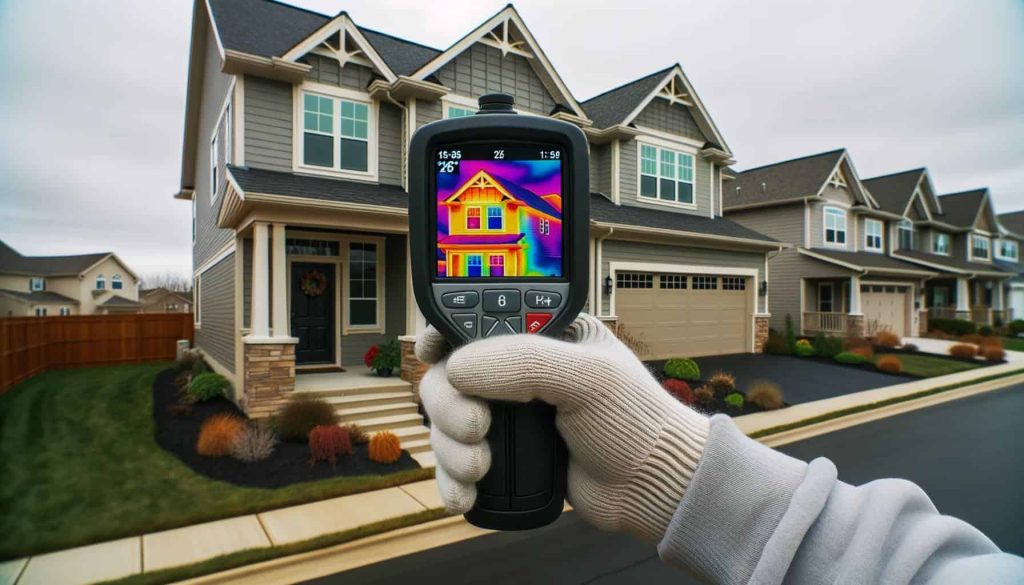
Thermal imaging is becoming an increasingly popular technique used during EIFS inspections to identify hidden moisture issues accurately and efficiently.
What is Thermal Imaging?
Thermal imaging, also known as infrared thermography, utilizes special cameras designed to detect minute temperature differences on the surface of objects. Thermal imaging cameras work by recognizing the infrared radiation emitted from an object proportional to its temperature.
These infrared cameras produce images displaying a range of colors representing relative surface temperatures – warmer areas appear lighter or white, while cooler zones are darker with a bluish tone. This allows inspectors to identify patterns and anomalies indicating areas of excess heat, moisture, or deficiencies.
How Does Thermal Imaging Work?
Thermal imaging cameras contain sensors that are receptive to infrared wavelengths emitted from an object based on its temperature. As objects become warmer, they emit more infrared radiation which the thermal camera’s detector picks up and converts into visible images.
Since infrared radiation is invisible to the naked eye, the thermal camera translates this data into a visible spectrum identifying subtle temperature variations. Thermal imaging works even in total darkness by sensing the temperature radiated by objects.
Modern thermal cameras use advanced sensors to capture thousands of temperature data points across a scene. This creates detailed thermograms pinpointing exactly where heat patterns exist indicating moisture, air leaks, insulation issues, or other problems in EIFS walls.
The Benefits of Using Thermal Imaging in EIFS Inspections
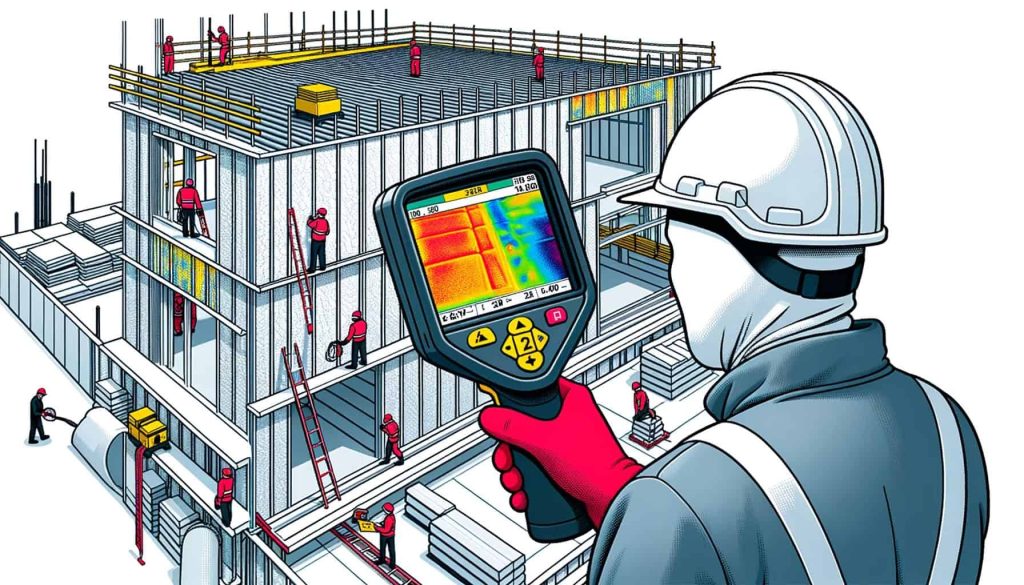
Utilizing thermal imaging as part of EIFS inspections provides several key advantages:
Detection of Moisture and Heat Anomalies
The primary benefit of thermal imaging for EIFS is the ability to identify areas of excess moisture and heat where it may not be visible. Trapped moisture in an EIFS wall assembly can create temperature differentials versus surrounding materials.
Thermal imaging can detect these moisture patterns accurately before any exterior signs of damage become noticeable. Identifying hidden moisture buildup can prevent major restoration work.
Improved Accuracy and Efficiency
Thermal cameras can scan entire elevations or sections of a building rapidly, detecting anomalies that may be overlooked in manual visual inspections. Inspections can be performed faster while still achieving highly detailed results.
The accuracy of determining moisture and deficiencies is also greatly improved versus guessing at potential problem areas. Thermal imaging eliminates guesswork and provides precise data on hidden issues.
Identifying Difficult Defects
Certain types of EIFS damage or flaws in intersections, penetrations, and top edges can be nearly impossible to identify from exterior visible inspection alone. Thermal imaging allows inspectors to pinpoint temperature differences suggesting hidden defects.
Thermal cameras can also identify areas of insufficient insulation coverage and gaps behind the EIFS based on heat patterns. Catching these problems early is key.
| Key Takeaways: Benefits of Thermal Imaging for EIFS Inspections |
|---|
| Accurately detects hidden moisture and temperature anomalies |
| Improves inspection efficiency and accuracy |
| Identifies difficult to find defects behind EIFS |
| Rapidly scans large sections and provides detailed thermograms |
| Eliminates guesswork and provides precise data |
The Role of Certified Thermographers in EIFS Inspections
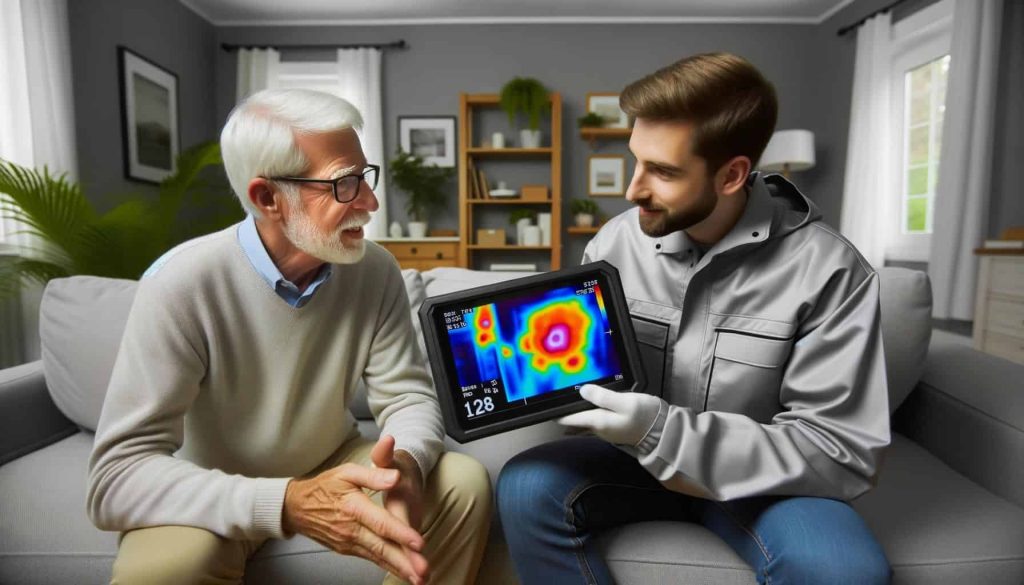
For thermal imaging to be utilized effectively in EIFS inspections, proper training and certification of thermographers is essential.
Proper Installation of EIFS
When EIFS is installed correctly following manufacturer specifications, the risk of underlying moisture issues is greatly reduced. However, flaws in substrate preparation, flashing, sealant joints, and insulation board attachment can still occur.
Certified thermographers competent with EIFS systems know what to look for in identifying installation defects that may allow water intrusion over time.
Ensuring Quality Control
Thermal imaging used during initial EIFS installation can also verify insulation boards were properly attached and that any moisture in the substrate has fully dried before finish coats are applied.
Certified thermographers understand proper thermal imaging techniques to ensure the wall assembly meets specifications and to prevent future failure.
How to Incorporate Thermal Imaging in EIFS Inspections
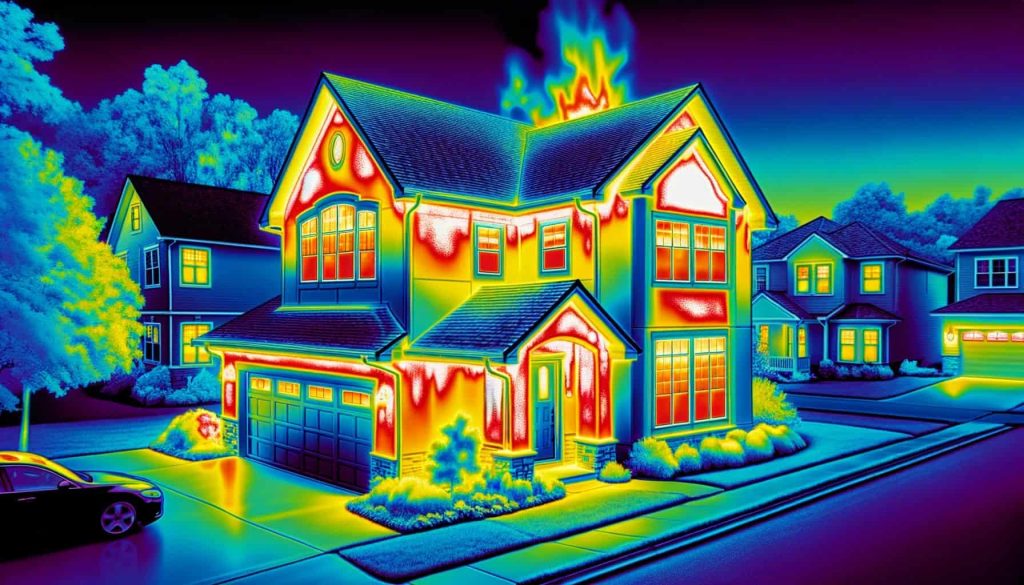
To utilize thermal imaging most effectively, thermographers follow certain procedures and techniques:
Process and Techniques
- Thorough visual inspection of the entire façade to look for visible cracks, damage, or degradation
- Check for proper integration of flashings, sealants, trim pieces, and intersections
- Scan EIFS surfaces methodically in an overlapping grid pattern stopping for closer analysis whenever an anomaly appears
- Compare suspect areas to surrounding zones to determine if a significant temperature differential exists indicating moisture or flaws
- Create a thermogram report marking all thermal anomalies and deficiencies for further analysis
Utilizing Thermal Imaging Cameras
- Use advanced thermal cameras designed for building diagnostics with high resolution and sensitivity
- Adjust the thermal camera IR palette to best visualize temperature differences
- Ensure cameras meet standards for calibration, image quality, temperature range and sensitivity
- Use tripods, equipment, and techniques to capture optimal thermograms based on conditions
- Manage environmental factors like reflections, wind, and times of day that influence thermography
| Key Takeaways: Incorporating Thermal Imaging in EIFS Inspections |
|---|
| Scan the facade in a methodical overlapping grid pattern |
| Scan facade in a methodical overlapping grid pattern |
| Compare suspect areas to surrounding zones |
| Create detailed thermogram reports marking anomalies |
| Use professional-grade thermal imaging cameras |
| Manage environmental factors influencing results |
Why Proper Training and Experience is Essential for Thermal Imaging in EIFS Inspections
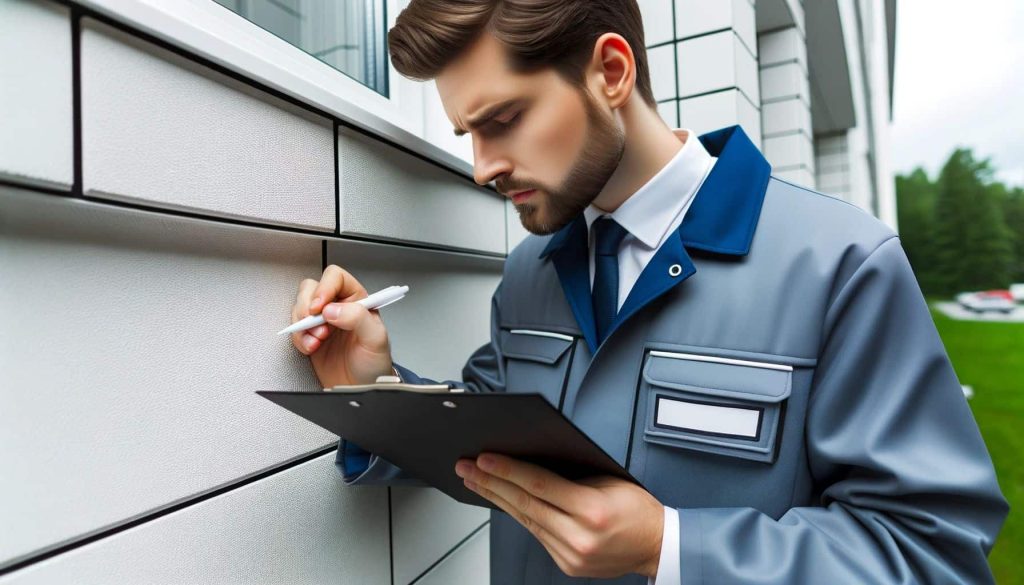
While thermal cameras provide invaluable data on moisture issues and flaws, the results are only as good as the thermographer interpreting them. Proper training and experience is crucial for accurate analysis.
Avoiding False Positives and Negatives
Many factors beyond just moisture can influence the surface temperatures of EIFS walls. A certified thermographer knows how to distinguish real areas of concern from benign influences like HVAC units, interior heat sources, or piping in walls.
A proper understanding of building science helps avoid false positives while also correctly identifying real anomalies that an amateur may miss.
Ensuring Accurate Interpretation of Results
Thermal imaging does not directly identify moisture – it simply indicates temperature differences that can suggest moisture intrusion. An experienced thermographer will know to conduct further analysis using moisture meters and other diagnostics to confirm where actual dampness exists.
They can make reliable recommendations on where invasive testing or repairs are warranted based on verifying thermal imaging results. Correct interpretation ensures problems get properly addressed.
The Results of Thermal Imaging in EIFS Inspections
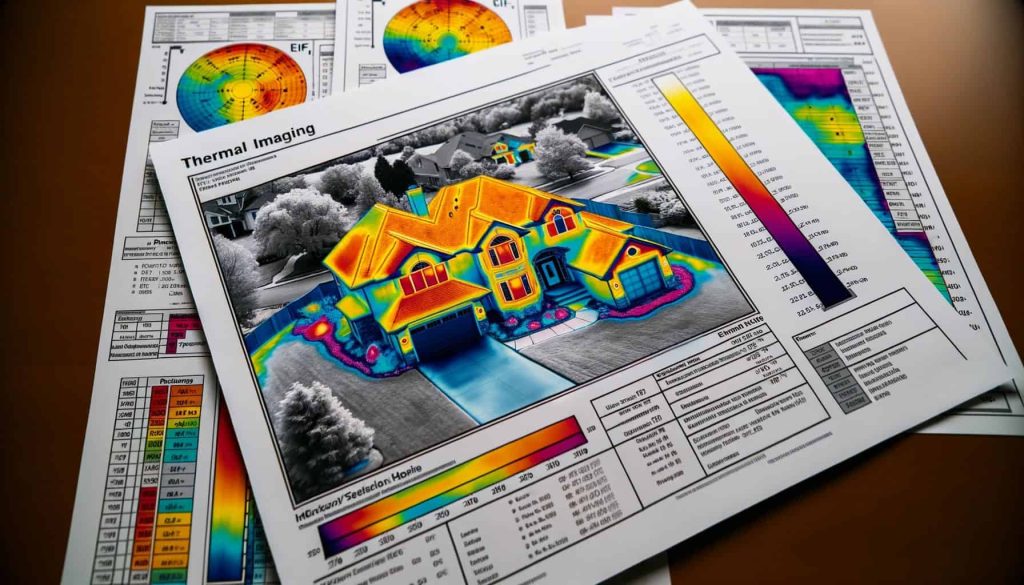
In the hands of a competent thermographer, thermal imaging delivers invaluable inspection data:
Detailed Analysis and Reports
Comprehensive thermography reports that include annotated thermal images highlighting anomalies, analysis of deficiencies, and recommended solutions provide both homeowners and contractors with critical documentation.
Reports eliminate uncertainty on what areas require further investigation or repairs.
Identifying Potential Issues and Solutions
Beyond just pinpointing moisture damage or installation flaws behind EIFS walls, thermal imaging can reveal insulation gaps, pest infestations, excessive air leakage, and other underlying defects impacting performance and longevity.
Inspection reports outline both the extent of problems discovered and provide possible repair approaches.
Educating Clients on EIFS Maintenance
Thermal inspection reports become an important asset for homeowners and property managers to understand vulnerabilities in their EIFS facade and how to properly maintain it moving forward.
Thermal imaging becomes an integral part of planned, routine maintenance.
| Key Takeaways: Results of Thermal Imaging for EIFS |
|---|
| Detailed thermography reports with annotated images |
| Identification of underlying issues and solutions |
| Education on proper EIFS maintenance |
Choosing a Reliable and Reputable Company for Thermal Imaging in EIFS Inspections
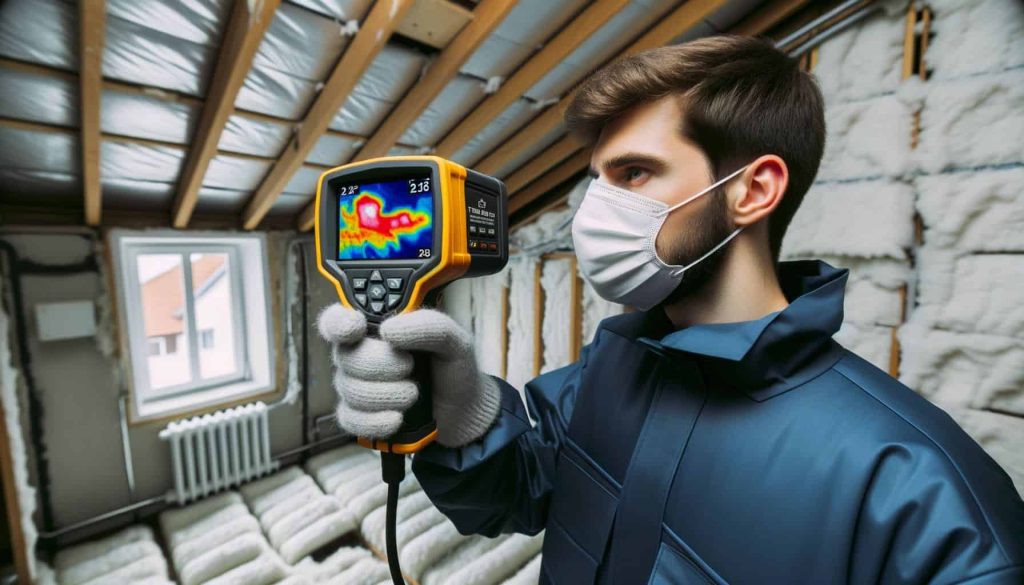
Since advanced thermography requires specialized expertise, it’s essential to select an inspection firm with extensive qualifications:
- Advanced training and certification for thermographers from leading organizations
- Extensive knowledge of building science and diagnostics
- Experience with all types of cladding systems including EIFS inspection
- State-of-the-art thermal imaging cameras and equipment
- Proven track record providing accurate inspection reports
- Membership in professional associations for thermographers
Property managers and homeowners should verify an inspector’s credentials and seek referrals when choosing a thermography service. All members of the inspection team should hold the required certifications.
Reliable thermography paired with moisture meter testing provides the most complete analysis of EIFS facades and superior detection of underlying flaws before they become major headaches.
Conclusion
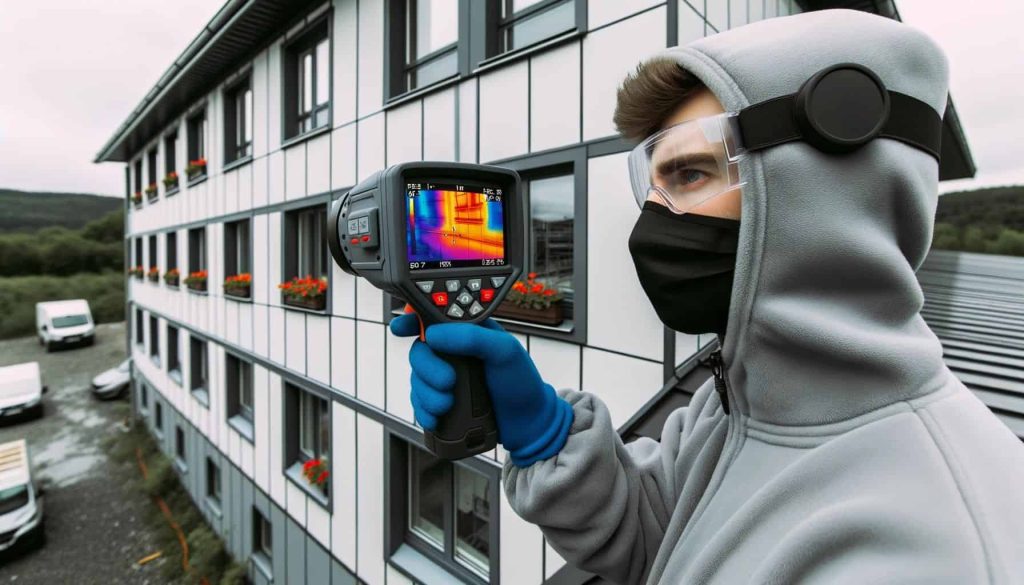
EIFS has proven to offer many benefits as an exterior cladding choice, but only with proper installation and maintenance. As part of a comprehensive maintenance plan, thermal imaging inspections provide invaluable data on potential deficiency areas and moisture issues before worsening.
In the hands of certified thermographers, thermal cameras can quickly scan EIFS facades identifying anomalies and problems that would otherwise go unnoticed. Detailed thermography reports become vital documents to record the extent of any EIFS deficiencies and allow for timely repairs.
Thermal imaging eliminates the uncertainty of visual inspections alone and takes much of the guesswork out of assessing EIFS conditions. For both single-family homes and large-scale multi-unit complexes, thermal imaging is a wise investment to protect the building envelope and avoid major headaches. As thermography technology continues improving, its role in EIFS inspections will keep increasing over time.
Regular EIFS inspection and maintenance is the best way to protect your investment and avoid costly repairs down the road. For over 25 years, the experts at Indiana Wall Systems have been providing top-quality EIFS inspections, maintenance, and restoration services for commercial and residential properties across the state. Let us put our experience and advanced thermography techniques to work for you.
Contact Indiana Wall Systems today to schedule a comprehensive EIFS inspection. Our qualified thermographers will thoroughly analyze your building envelope using state-of-the-art thermal imaging cameras. Receive an accurate assessment of your EIFS facade along with a detailed moisture analysis. Have peace of mind knowing exactly where your system stands. Maintain the lasting beauty and performance of your exterior. Call Indiana Wall Systems at (765) 341-6020 or click to Get a Free Estimate.
FAQs
What are the limitations of thermal imaging for EIFS inspections?
While thermal cameras are excellent at identifying temperature anomalies behind EIFS, thermography does not directly detect moisture. Thermal imaging serves as an initial inspection tool to guide further direct moisture testing. Other limitations include the skill of the thermographer and environmental conditions during inspection.
Does thermal imaging completely replace other inspection methods for EIFS?
No, thermal imaging complements rather than replaces other crucial inspection techniques like direct moisture meters, tapping tests, corrosion analysis, and lab testing of wall assembly samples. Thermal imaging is most effective when combined with these other diagnostic tools.
How long does a typical thermal imaging EIFS inspection take?
Depending on the size and complexity of the building, a comprehensive thermographic inspection normally takes about 2-3 days including field analysis, reporting, and customer consultations. Simple thermography scans without detailed reporting may take only a few hours.
Can thermal imaging be used on interior EIFS walls or ceilings?
Yes, thermography is highly useful for scanning interior EIFS finishes to identify moisture intrusion from plumbing leaks, condensation issues, or exterior water penetration passing through the wall to the indoor surface. Thermal imaging works equally well on interior and exterior EIFS.
How often should thermal imaging inspections be performed on EIFS facades?
Most building experts recommend a complete thermography inspection at least once per year as part of an ongoing maintenance plan. Higher-risk buildings may warrant semi-annual inspections. Thermal imaging can also be performed after major storms to detect any damage.


